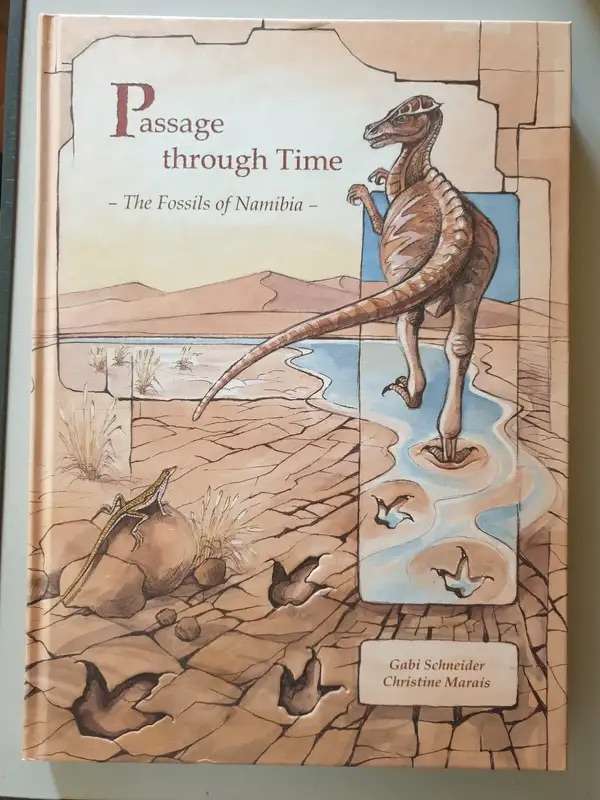
PASSAGE THROUGH TIME: FOSSILS OF NAMIBIA BY GABI SCHNEIDER AND CHRISTINE MARAIS
Check my rate
| Main centres: | 1-3 business days |
| Regional areas: | 3-4 business days |
| Remote areas: | 3-5 business days |

| Main centres: | 1-3 business days |
| Regional areas: | 3-4 business days |
| Remote areas: | 3-5 business days |
"PASSAGE THROUGH TIME: FOSSILS OF NAMIBIA" BY GABI SCHNEIDER AND CHRISTINE MARAIS. HARDCOVER, IN EXCELLENT CONDITION, 158 PAGES, NO INSCRIPTIONS OR NAMES.
Southern Africa had moved away from the polar region towards the end of the Dwyka period as a result of continental drift. Also, the global climate as such became warmer during the Permian as the carbon dioxide content in the atmosphere increased, possibly due to lower levels of abstraction by tropical vegetation, which declined dramatically during that period, perhaps as a consequence of less rainfall, as well as the effects of ocean and wind currents, which were in turn related to events like drift from the poles. The combination of these factors resulted in the melting of the glaciers and eventually the end of the Dwyka ice age in the mid-Permian, about 270 million years ago. The highlands initially retained their ice cover and spawned Alpine-like glaciers which cut long and deep glacial valleys in north-western Namibia.